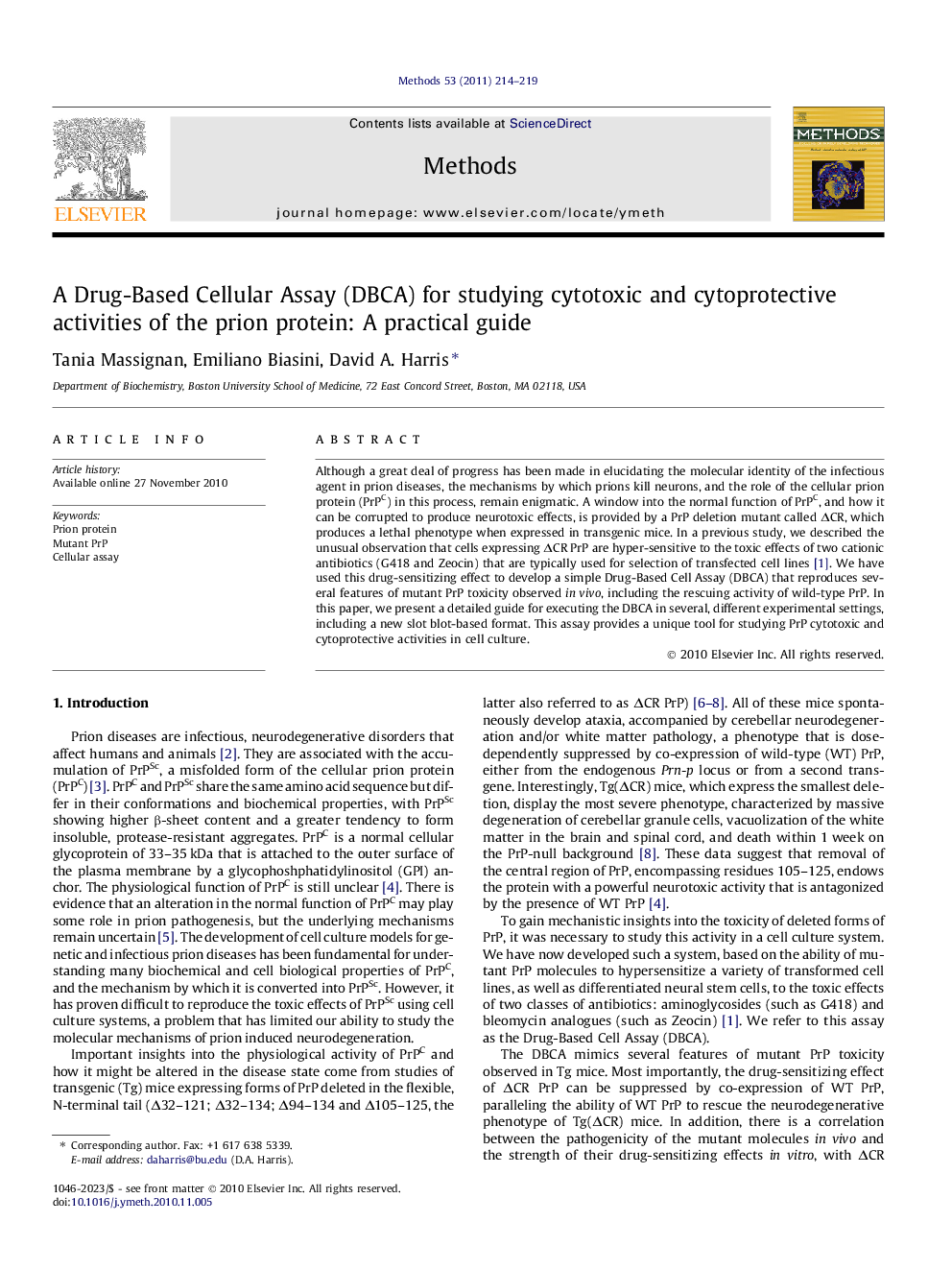| Article ID | Journal | Published Year | Pages | File Type |
|---|---|---|---|---|
| 10826001 | Methods | 2011 | 6 Pages |
Abstract
Although a great deal of progress has been made in elucidating the molecular identity of the infectious agent in prion diseases, the mechanisms by which prions kill neurons, and the role of the cellular prion protein (PrPC) in this process, remain enigmatic. A window into the normal function of PrPC, and how it can be corrupted to produce neurotoxic effects, is provided by a PrP deletion mutant called ÎCR, which produces a lethal phenotype when expressed in transgenic mice. In a previous study, we described the unusual observation that cells expressing ÎCR PrP are hyper-sensitive to the toxic effects of two cationic antibiotics (G418 and Zeocin) that are typically used for selection of transfected cell lines [1]. We have used this drug-sensitizing effect to develop a simple Drug-Based Cell Assay (DBCA) that reproduces several features of mutant PrP toxicity observed in vivo, including the rescuing activity of wild-type PrP. In this paper, we present a detailed guide for executing the DBCA in several, different experimental settings, including a new slot blot-based format. This assay provides a unique tool for studying PrP cytotoxic and cytoprotective activities in cell culture.
Keywords
Related Topics
Life Sciences
Biochemistry, Genetics and Molecular Biology
Biochemistry
Authors
Tania Massignan, Emiliano Biasini, David A. Harris,
